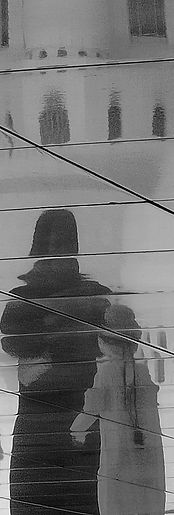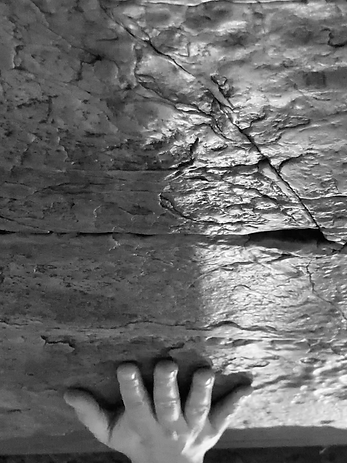" Font of knowledge": Visual Vertigo & Oceanic Feeling
(Duration 5:08 mn. FLIR thermal video, 2024).
"Font of Knowledge: Visual Vertigo & Oceanic Feeling”, the title itself initiates a multilayered interpretation. 'Font' refers not only to written typographic characters (letters, numbers, symbols), but also alludes to a fountain – a source or origin."Regarding the etymology of the term "font" in this context, it comes from the Middle English "fonte," which in turn derives from the Latin "fons" or "fontis," meaning "spring" or "source." the common etymology of "font" (as in typographic characters) and "fount" (as in a fountain or source). Both words trace back to the Latin "fons," "fontis," meaning a spring or source. This shared root underlies their similar meanings related to sources or origins. The use of "font" in this artistic context is a play on words, connecting the idea of a source of knowledge and the medium (typography) through which that knowledge is conveyed.
When using thermal cameras, certain elements or "targets" often show up in the footage because these cameras are designed to detect and display variations in temperature. These targets might be areas of particular heat or cold that the camera is especially sensitive to. They are an inherent part of how thermal imaging works, as these cameras visualize the infrared radiation (heat) emitted by objects.
In this work which involves frame-by-frame animation combining thermal videography, these thermal targets can be an issue. To deal with this, I have used an editing technique that's like using an eraser as a brush. This means that I went through the video frame by frame, and manually removed or erased these targets. The analogy to using an eraser as a brush implies that this process was not just about removing unwanted elements, but also about creatively reshaping or redrawing each image frame by frame.
Central to this piece are images from a private collection of autochromes, dating from 1910-1930, focusing on Christian missions in the Holy City and baptism sites in Tiberias, Israel. These historical images are not just presented; they are revitalized, bringing them to life anew. The animation thus acts as a form of resuscitation act.
Core to this video is the concept of “visual vertigo” – a phenomenon characterized by a mismatch between visual inputs and the vestibular system's sense of balance and orientation. This dissonance can lead to dizziness or disorientation, often triggered in environments with conflicting visual and spatial cues. In a religious context, such an experience can be profound and almost mystical, reminiscent of the “oceanic feeling.” This feeling, identified in psychoanalytic theory, refers to a state of ego dissolution, where the individual experiences a sensation of being merged with the external world, transcending the boundaries of the self to feel an expansive oneness with the universe. The stroboscopic motion used in the video, leading to a hypnotic feel, amplifies this sensation, forging a conceptual connection to the oceanic feeling. The sound design includes Russian Orthodox and Jewish liturgies and more contemporary music such as Poulenc Christmas Motet recorded live in Jerusalem Old City.



